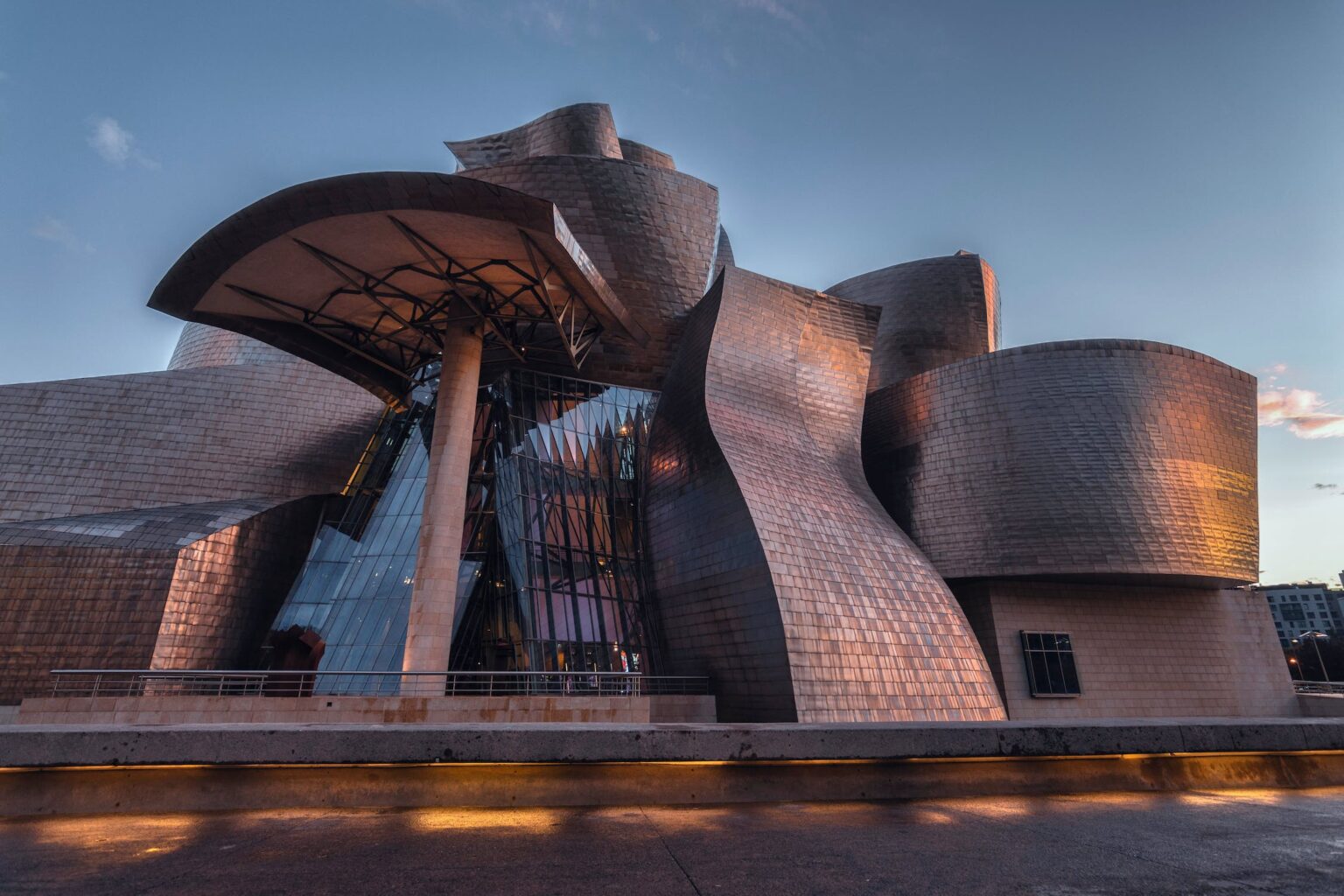Beginning in the 1980s, the industry’s forefront designers envisioned a future where advanced Building Information Models (BIM) would lead the construction of infrastructure and buildings. In the 90s, acclaimed architect Frank Gehry leveraged building modeling software from Dassault’s CAITA to design his iconic ribbon-like buildings in Bilbao, Spain (pictured below); Los Angeles; and other cities around the globe, leaving a lasting legacy.
By the early 2000s, contractors were more widely highlighting their proficiency in BIM, making the new era of “virtual design and construction” prevalent in the industry’s collective consciousness. However, the promising future was short-lived, as over the past decade the built world has begun to face the harsh reality that BIM was only feasible within large-scale and complex projects due to high costs associated with it. AI has the potential to minimize the labor required for tasks such as connecting detailed models, aligning schedules with models, and updating models as plans grow and change. If this occurs, the built world may finally achieve the actualized vision of BIM that has been around for almost 50 years.

According to BuiltWorlds’ recent Preconstruction Survey, even though technologists are implementing and introducing new tools to rely on project models, contractors are remaining frustrated by the challenge of creating these models and adding the necessary information to optimize these new solutions. Within the 2023 Preconstruction Benchmarking Report, it highlights aggregated data pertaining to preconstruction, technologies and themes surrounding it, and the top solutions. With emerging technologies and solutions constantly evolving and appearing, it can be a difficult realm to navigate, not to mention the niche areas that make up the built environment. Throughout the many changes within the industry one thing reigns true–the need to adapt and grow with technology as it arrives.
While AI holds an enormous potential to transform the industry, there has been some pushback about its implementation. Some of the main concerns are the fear that AI may begin to replace human workers, that it cannot accurately produce and comprehend complex construction projects, and that there are security and privacy risks associated while using AI. It may not be a perfect solution, but it is able to accelerate the adoption of BIM and make it accessible to a much wider part of the built environment.
As the AEC industry continues to look towards the future, the potential that AI holds to transform the way construction projects are designed, built, and managed is limitless. While some may remain weary about its implementation, the benefits of automating labor-intensive tasks, improving accuracy and efficiency, and increasing collaboration are too great to ignore. By embracing AI and applying it as a solution to further optimize BIM, the built world can anticipate a more efficient, sustainable, and innovative future.

Discussion
Be the first to leave a comment.
You must be a member of the BuiltWorlds community to join the discussion.